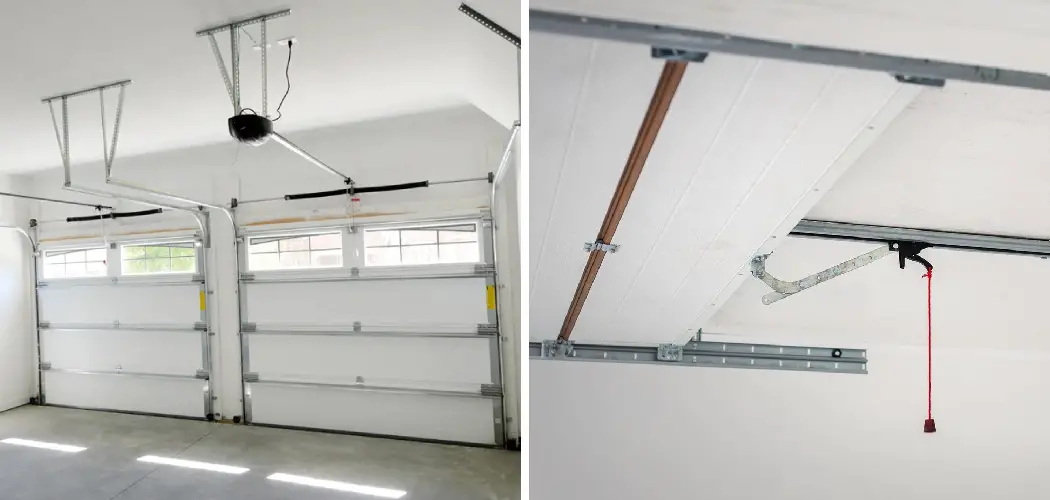Restoring functionality to your garage door after it has been unhooked or disengaged is a common and manageable task. Whether you’ve manually disconnected the door for maintenance or experienced a power outage, knowing how to hook the garage door back up is crucial for seamless operation.
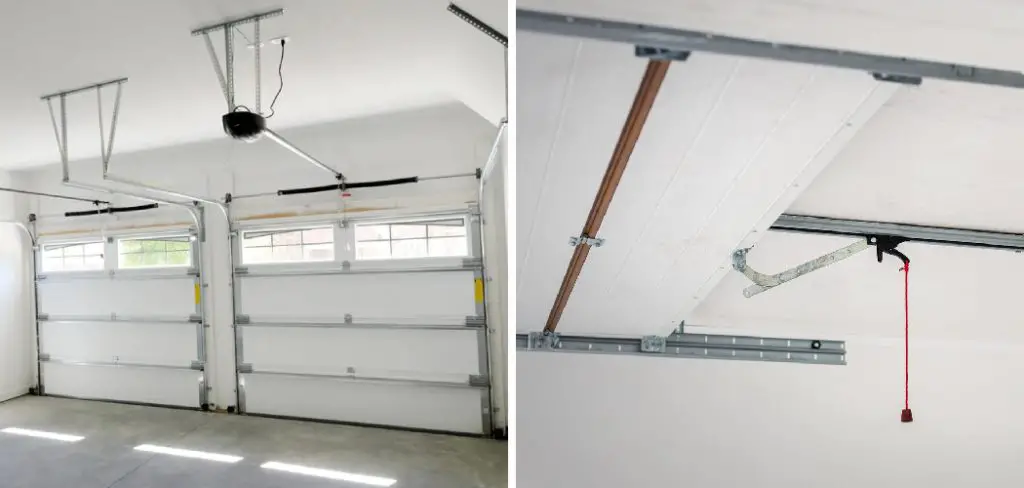
In this article, we will guide you through the step-by-step process of how to hook garage door back up, providing insights into both manual and automatic garage door systems.
From locating the release mechanism to aligning the door with the opener carriage, understanding these fundamental steps ensures a smooth and trouble-free reconnection.
Whether you are a DIY enthusiast or just seeking to troubleshoot a temporary disengagement, mastering the art of hooking up your garage door guarantees that your entrance and exit are restored with minimal effort and maximum efficiency.
Importance of Prioritizing Safety during the Reconnection Process
Garage door reconnection may seem like a simple task, but it is important to prioritize safety during the entire process. The garage door is one of the heaviest moving objects in your home and can cause serious injury or even death if not handled properly. Therefore, it is crucial to take all necessary precautions when hooking up a garage door.
First and foremost, always disconnect the power to your garage door opener before attempting to reconnect it. This will prevent any accidental activation of the door while you are working on it, which can lead to serious injury.
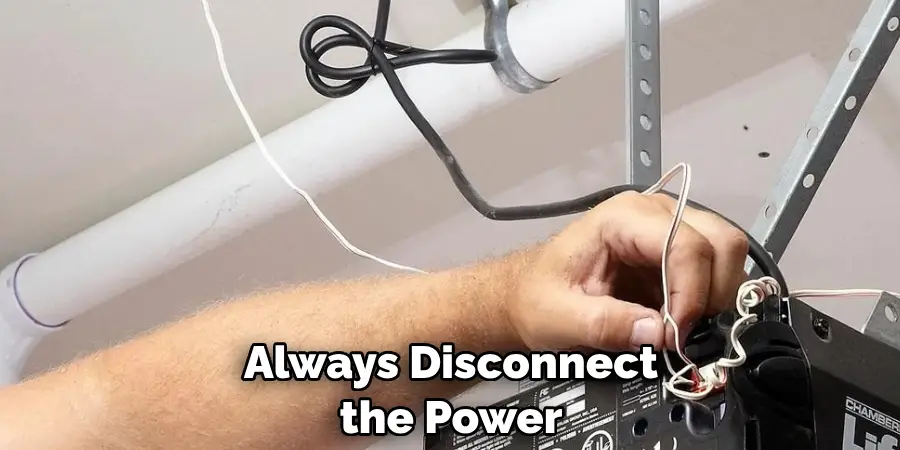
Next, make sure that all parts of the garage door are in good condition before reconnecting it. Check for any signs of wear and tear, such as frayed cables or broken springs. These should be repaired or replaced before attempting to reconnect the door.
When handling the actual reconnection process, it is important to follow the manufacturer’s instructions carefully. Each garage door opener may have slightly different steps for reconnection, so make sure you are following the correct ones. If you are unsure, consult a professional for assistance.
Another important aspect to consider during reconnection is the balance of the garage door. A properly balanced door will operate smoothly and efficiently, while an unbalanced one can cause strain on the opener and potentially lead to malfunctions. If you are unsure about the balance of your garage door, consult a professional for assistance.
Once the door is reconnected, it is crucial to test it before using it regularly. Make sure all safety features, such as auto-reverse and sensors, are working properly. If you notice any issues or abnormalities, do not use the door until they have been addressed.
10 Methods How to Hook Garage Door Back up
1. Check the Power Source
The first step to hooking up a garage door is to make sure that the power source is working properly. This can be done by checking the circuit breaker or fuse box to ensure that it is not tripped or blown. If it is, reset it and check to see if the power comes back on.
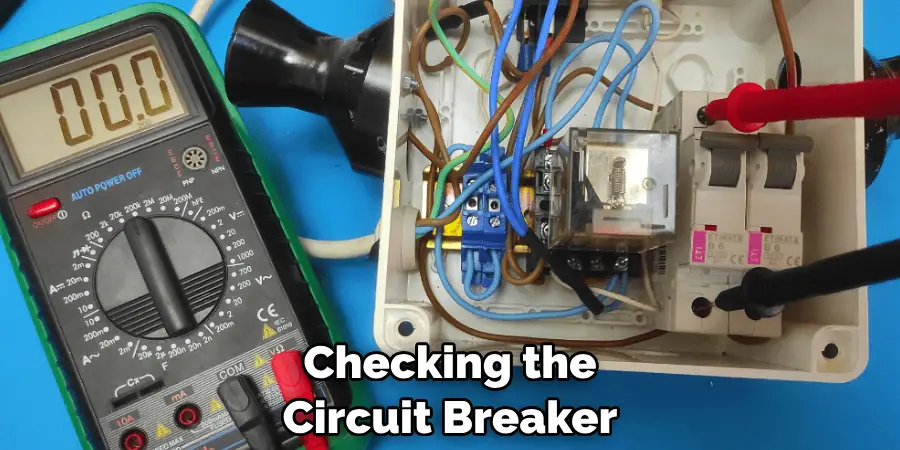
If not, you may need to call an electrician for further troubleshooting. Additionally, make sure that all of the wires are connected and in good condition.
2. Inspect the Tracks
Once you have confirmed that the power source is working properly, you will need to inspect the tracks of your garage door. Make sure they are clean and free of any debris or obstructions that might prevent your garage door from opening and closing properly.
Additionally, check for any signs of damage such as dents or rust spots, that could be causing problems with your door’s operation.
3. Adjust the Springs
The next step in hooking up a garage door is to adjust the springs if necessary. The tension of your springs will affect how easily your garage door opens and closes, so it’s important to make sure they are adjusted correctly for optimal performance. If you are unsure how to do this, consult a professional who can help you adjust them safely and accurately.
4. Replace Rollers
If your rollers are worn out or damaged, they may need to be replaced in order for your garage door to open and close properly again. Replacing rollers can be tricky, so it’s best left to a professional who has experience with this type of repair work in order to ensure the proper installation and functioning of your new rollers.
5. Lubricate Moving Parts
Lubricating all of the moving parts on your garage door will help keep them running smoothly and reduce wear over time. Use a lubricant specifically designed for use on garage doors in order to get maximum protection from rust and corrosion while also keeping everything running smoothly without making a mess.

Make sure all moving parts are well lubricated before attempting any further repairs or adjustments on your garage door system.
6. Secure Cables
One thing people often forget when hooking up their garage doors is securing the cables that connect them together at each end of their tracks. These cables must be securely fastened at both ends in order for your system to function properly without putting undue strain on any one part of it, which could lead to failure down the line.
Be sure these cables are securely fastened before proceeding with any other repairs or adjustments on your system as well as after they have been completed successfully, in order to ensure their safety and longevity over time.
7. Check Balance & Alignment
Your next step should be checking both the balance and alignment of all components within your system, including tracks, rollers, hinges, springs, etc… Proper balance ensures smooth operation, while proper alignment ensures even distribution across all components, which helps reduce wear over time as well as providing better overall performance from your system overall.
8. Inspect Weather Stripping & Seals
Weather stripping around doors helps keep out drafts, while seals between sections help keep moisture out, which can cause rusting over time if not addressed promptly.. Inspect weather stripping around doors as well as seals between sections for signs of damage such as cracking or peeling which may need replacing in order for proper functioning again..
9. Install New Garage Door Opener (if Necessary)
If you find yourself needing a new opener due either age/wear/tear, then installing one should always be done by a professional who has experience with this type of repair work.
Not only does this guarantee proper installation, but also provides peace of mind knowing that everything has been installed correctly according to regulations set forth by manufacturers ensuring safe operation every single time.
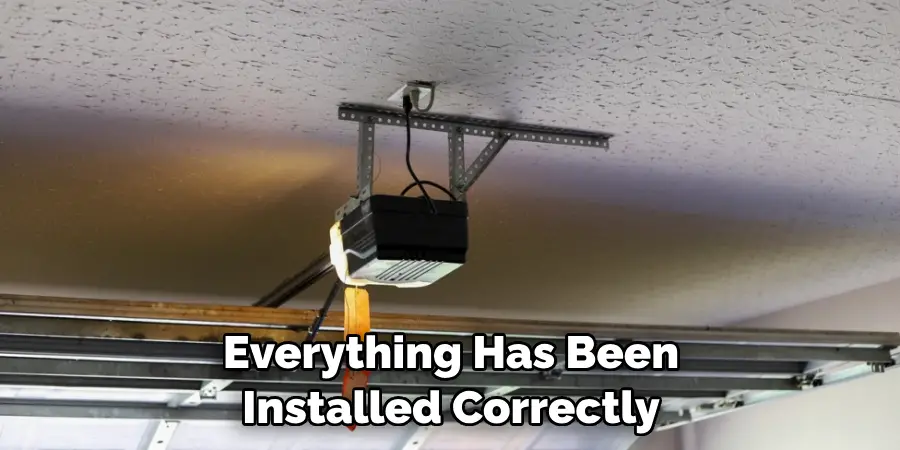
10. Test System After Repairs Are Completed
Once all repairs have been completed successfully test the entire system by opening/closing several times, ensuring a smooth operation throughout the entire process. If anything seems off during testing, then go back through the steps above once more, making sure no small details were overlooked before calling in professionals if needed.
Things to Consider When Hooking up Your Garage Door
One of the most important and often overlooked aspects of a garage door system is its ability to function properly. Many homeowners only think about their garage doors when they are not working, but regular maintenance and proper installation are essential for ensuring that your door works smoothly and reliably.
When hooking up your garage door, there are a few key factors to keep in mind to ensure that the process goes smoothly and your door is functioning at its best.
- Proper Installation: First and foremost, it’s important to make sure that your garage door is installed correctly. If you are installing a new door, make sure to follow the manufacturer’s instructions carefully or hire a professional for assistance. For existing doors, regularly check for any signs of wear and tear or damage that may need to be addressed before hooking the door back up.
- Clearances: When installing a new garage door, it’s crucial to make sure that there is enough clearance for the door to open and close smoothly. This includes not only vertical clearance but also horizontal clearance for the tracks and rollers. If you are unsure about proper clearances, consult a professional for guidance.
- Lubrication: Proper lubrication is key for ensuring that your garage door opener and other moving parts work smoothly and quietly. Before hooking up your door, make sure to apply a thin layer of oil or silicone-based lubricant to the tracks, rollers, hinges, and springs. This will help reduce friction and extend the life of these components.
Common Mistakes to Avoid When Reconnecting a Garage Door
In this section, we will discuss some common mistakes that people make when trying to reconnect their garage door.
1. Failure to Release the Emergency Cord
One of the most common mistakes people make when trying to hook up their garage door is failing to release the emergency cord. The emergency cord is typically a red handle attached to the garage door opener’s carriage. It is designed to allow you to manually open and close the door if there is a power outage or if the opener malfunctions.
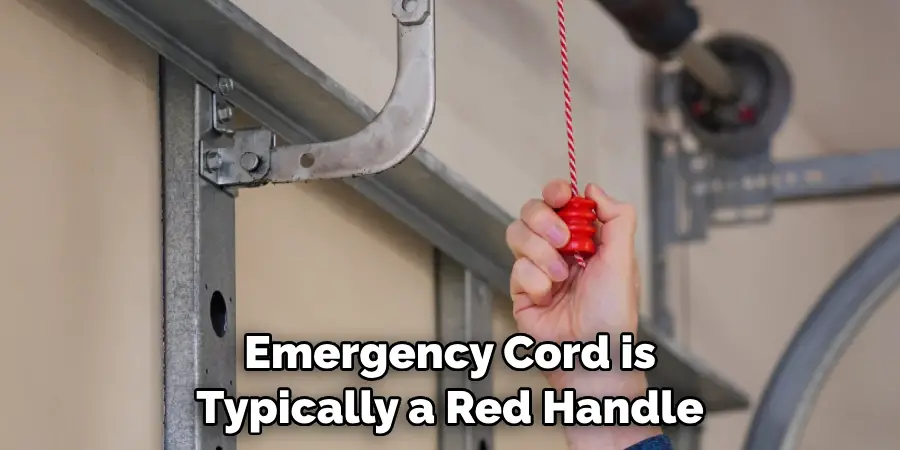
Before attempting to reconnect your garage door, make sure to release the emergency cord by pulling it straight down towards the floor. This will disengage the mechanism and allow you to manually move the door up and down.
2. Incorrectly Aligning the Carriage and Trolley
When reconnecting a garage door, it is essential to align the carriage and trolley correctly. The carriage is the part of the opener that connects to the garage door, while the trolley is attached to the chain or belt drive mechanism.
To properly align them, make sure that both pieces are aligned with each other and that the carriage is positioned over the trolley. If they are misaligned, it can cause the door to operate improperly or become stuck.
3. Forgetting to Re-engage the Opener
After manually opening your garage door, it is important to remember to re-engage the opener before attempting to use it again. Failure to do so can result in damage to the opener or the door.
To re-engage the opener, pull down on the emergency cord to release it and then push the garage door up until you hear a click. This indicates that the opener has been reconnected and is ready for use.
4. Not Checking for Obstructions
Before attempting to reconnect your garage door, make sure to check for any obstructions in the door’s path. This includes objects such as bikes, tools, or debris that may have fallen in front of the door.
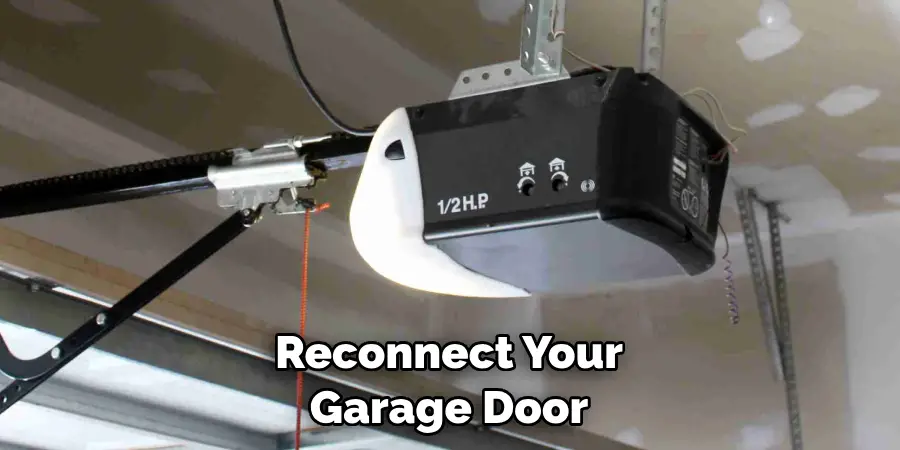
Trying to reconnect the door with obstructions in the way can lead to damage to the door, opener, or surrounding objects. Take a few moments to clear out any potential obstacles before proceeding.
Conclusion
In conclusion, getting the garage door back up can seem like a daunting task. However, with the right tools and know-how, it doesn’t have to be that difficult. Remember to always use correct safety precautions when attempting this repair and never attempt repairs if you are unsure of your capabilities.
Taking the time to research and understand each piece of the process is essential in achieving garage door success. We hope that our blog post has been useful in providing you with more information on how to hook garage door back up correctly and easily!
Now you are armed with the knowledge necessary to complete this project in a safe and successful manner. Good luck – we know that your hard work will pay off!
I am Rick. I grew up helping my dad with his handyman service. I learned a lot from him about how to fix things, and also about how to work hard and take care of business. These days, I’m still into fixing things- only now, I’m doing it for a living.
I’m always looking for new ways to help people grow and develop. That’s why I have created this blog to share all my experience and knowledge so
that I can help people who are interested in DIY repair.

